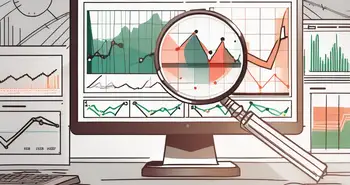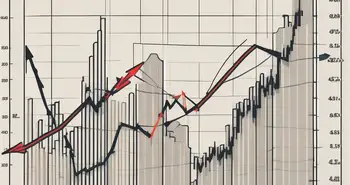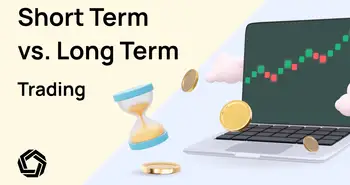How to Test a Trading Strategy

As a seasoned trader, I cannot emphasize enough the importance of testing a trading strategy before putting your hard-earned money on the line. Developing and refining a trading strategy requires time, effort, and thorough testing. In this comprehensive guide, I will walk you through the fundamental components of a trading strategy, the steps to test it effectively, and the common mistakes to avoid. So, let's dive in and learn how to test a trading strategy like a pro!
Understanding the Importance of Testing a Trading Strategy
Before we delve into the nitty-gritty details, let's first grasp the significance of strategy testing in trading. Many novice traders often rush into making trades without thoroughly evaluating the effectiveness of their strategies. This hasty approach can lead to disastrous financial consequences.
By testing your trading strategy, you gain valuable insights into its performance and reliability. You can identify potential flaws, refine your approach, and make necessary adjustments to maximize profitability. A well-tested strategy gives you the confidence and peace of mind to execute trades with precision.
The Role of Strategy Testing in Trading
Strategy testing plays a crucial role in enhancing your overall trading performance. It allows you to assess the viability of your approach based on historical data. By analyzing past market conditions and applying your strategy retrospectively, you can gauge its effectiveness and reliability.
Furthermore, strategy testing helps you understand the strengths and weaknesses of your approach. You can identify which market conditions it performs well in and where it falls short. Armed with this knowledge, you can optimize your strategy for different market situations and adapt to changing trends.
Benefits of Thoroughly Testing Your Trading Strategy
Thoroughly testing your trading strategy offers several key benefits that can significantly impact your success as a trader. Firstly, it allows you to validate the profitability and consistency of your approach. By analyzing historical data, you can assess whether your strategy generates consistent profits or if it's prone to erratic performance.
In addition, testing helps you establish realistic expectations about the potential returns and risks associated with your strategy. This enables you to set achievable goals and manage your risk effectively. It also allows you to fine-tune your approach, minimizing drawdowns and maximizing gains.
Fundamental Components of a Trading Strategy
Every successful trading strategy is built on a strong foundation. Let's explore the fundamental components that form the backbone of a robust trading approach.
Defining Your Trading Goals
Before you start testing a strategy, it's essential to establish clear trading goals. Are you looking for short-term gains or long-term growth? Are you comfortable with high-risk, high-reward trades, or do you prefer a more conservative approach?
Having a clear understanding of your objectives helps you select the most suitable strategy, saving you time and effort. It also ensures that your testing process aligns with your desired outcomes.
Identifying Suitable Markets
Not all strategies perform equally well in every market. Therefore, it's crucial to identify the markets that best suit your strategy. Consider factors such as liquidity, volatility, trading hours, and the types of assets traded.
Furthermore, be aware of any specific conditions or events that may impact the market you are trading. By understanding the nuances of your chosen market, you can tailor your strategy and improve its performance.
Determining Entry and Exit Points
The most successful traders have a clearly defined set of rules for entering and exiting trades. These rules are based on technical indicators, fundamental analysis, or a combination of both.
When testing your strategy, pay close attention to the effectiveness of your chosen entry and exit criteria. They should be well-defined, unambiguous, and capable of generating consistent results. Refine your rules as necessary to improve the accuracy of your trades.
Steps to Test Your Trading Strategy
Now that we understand the foundational elements of a trading strategy, let's explore the steps involved in testing it effectively.
Developing a Hypothesis
Every successful trading strategy begins with a hypothesis. This is your initial belief about how the market will behave under certain conditions. Formulating a solid hypothesis requires diligent research, analysis, and an understanding of market trends.
Consider multiple scenarios and potential outcomes, accounting for both bullish and bearish market conditions. This will allow you to develop a well-rounded strategy that can withstand various market dynamics.
Backtesting Your Strategy
Backtesting is the process of applying your trading strategy to historical market data. This allows you to evaluate its performance and determine how it would have fared in the past. Backtesting provides valuable insights into the profitability and reliability of your strategy.
When backtesting, use a robust software or program that can accurately simulate the market conditions during the historical period you're analyzing. Proper backtesting requires attention to detail, ensuring that your simulated trades closely match real-world trading scenarios.
Forward Testing Your Strategy
Once you are satisfied with the results of your backtesting, it's time to forward test your strategy. This involves applying your approach to real-time market conditions in a simulated environment.
Forward testing helps you understand how your strategy performs under live market conditions. It allows you to fine-tune your approach, identify any discrepancies between the backtested and forward-tested results, and validate the robustness of your strategy.
Evaluating Your Testing Results
The final step in testing your trading strategy is evaluating the results. Look beyond the profit and loss figures and assess the overall performance. Consider metrics such as drawdowns, win rates, risk-reward ratios, and average trade duration.
By analyzing these factors, you can identify any weaknesses in your strategy and make the necessary adjustments. Keep in mind that trading strategies are not set in stone and should be continuously refined based on market conditions and your evolving trading goals.
Common Mistakes in Testing Trading Strategies
Even the most meticulously developed strategies can fall prey to common testing mistakes. Avoiding these pitfalls is crucial for accurate and reliable testing results. Let's explore the most common mistakes traders make when testing their strategies.
Overfitting Your Strategy
Overfitting occurs when a strategy is excessively optimized to fit historical data but fails to perform well in real-time trading. It often leads to poor performance and significant losses.
To avoid overfitting, strike a balance between optimizing your strategy and ensuring it remains adaptable to changing market conditions. Avoid tweaking your approach based on isolated data points or by hindsight bias.
Ignoring Market Trends
Market trends can have a significant impact on your trading strategy's performance. Ignoring or overlooking trends can lead to missed opportunities or entering trades when conditions are unfavorable.
Stay informed about market trends, economic indicators, and news that may influence the market you're trading. Consider incorporating trend analysis into your strategy testing to improve your trading decisions.
Neglecting Risk Management
Effective risk management is paramount to long-term trading success. Neglecting risk management during strategy testing can introduce unnecessary losses and expose your capital to undue risk.
Ensure that your testing process includes evaluating how your strategy handles risk. Consider metrics such as maximum drawdown, risk-to-reward ratios, and position sizing formulas. Incorporate risk management techniques into your strategy to safeguard your capital.
FAQs
Q: Why is testing a trading strategy important?
A: Testing a trading strategy provides insights into its performance, strengths, and weaknesses. It allows you to validate its profitability, establish realistic expectations, and optimize it for different market conditions.
Q: How do I determine suitable markets for my strategy?
A: Consider factors such as liquidity, volatility, and trading hours. Identify markets that align with your strategy's goals and objectives.
Q: What is the purpose of forward testing?
A: Forward testing helps you validate your strategy under real-time market conditions and make necessary adjustments before risking real money.
Q: What is overfitting in strategy testing?
A: Overfitting occurs when a strategy is excessively optimized to historical data, resulting in poor performance when applied to real-time trading.
Q: How can I avoid common testing mistakes?
A: Avoid overfitting by striking a balance between optimization and adaptability. Stay aware of market trends and incorporate risk management techniques into your strategy.
So, fellow traders, remember that testing your trading strategy is not optional but essential for success. By understanding the importance of strategy testing, mastering the fundamental components, following the steps to test effectively, and avoiding common mistakes, you can elevate your trading game to new heights. Stay disciplined, stay focused, and always test before you invest!
Ready to put your trading strategy to the ultimate test? Join Morpher, the revolutionary trading platform that's changing the game with blockchain technology. With Morpher, you can trade across a multitude of asset classes with zero fees, infinite liquidity, and the safety of a non-custodial wallet. Whether you're looking to invest fractionally, short sell without interest fees, or leverage your trades up to 10x, Morpher offers a unique and innovative trading experience. Don't miss out on the opportunity to transform your trading with Morpher's Virtual Futures and other synthetic instruments. Sign Up and Get Your Free Sign Up Bonus today, and elevate your trading strategy on a platform designed for the future of investing.

Disclaimer: All investments involve risk, and the past performance of a security, industry, sector, market, financial product, trading strategy, or individual’s trading does not guarantee future results or returns. Investors are fully responsible for any investment decisions they make. Such decisions should be based solely on an evaluation of their financial circumstances, investment objectives, risk tolerance, and liquidity needs. This post does not constitute investment advice.

Painless trading for everyone
Hundreds of markets all in one place - Apple, Bitcoin, Gold, Watches, NFTs, Sneakers and so much more.

Painless trading for everyone
Hundreds of markets all in one place - Apple, Bitcoin, Gold, Watches, NFTs, Sneakers and so much more.









